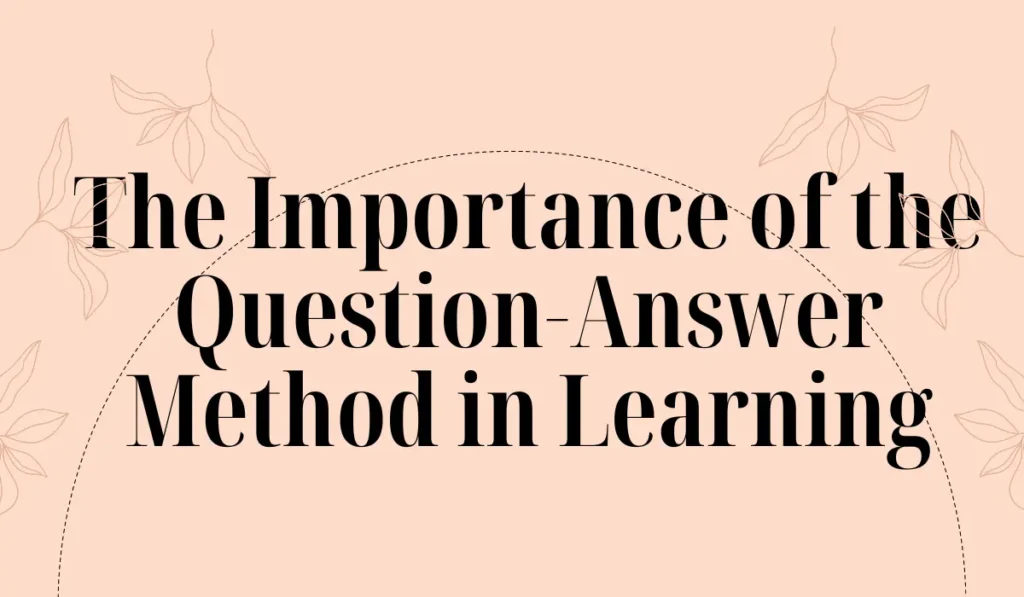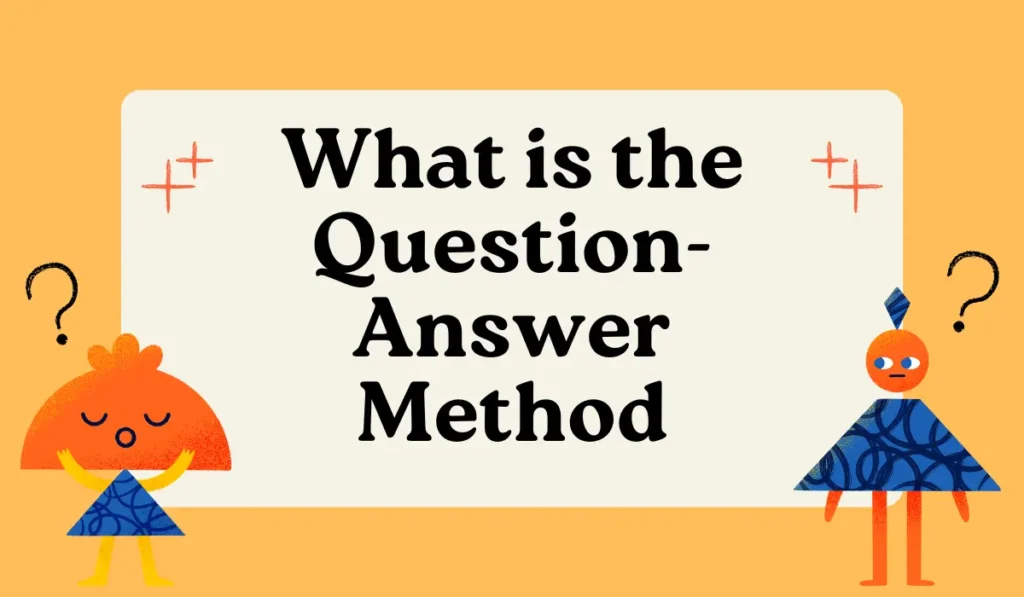The question-answer method is a technique used in teaching and learning to facilitate the acquisition and retention of knowledge. It involves the process of asking questions to students and expecting them to provide answers, either individually or as a group.
This method encourages active participation and engagement, as well as critical thinking and problem-solving skills. By posing questions and eliciting responses, educators can assess students’ understanding, clarify misconceptions, and promote deeper learning.
The question-answer method is widely used in various educational settings, from classrooms to online platforms, as an effective way to enhance learning outcomes.
The Importance of the Question-Answer Method in Learning

This method is highly effective in engaging students and encouraging them to think deeply about the subject matter.
- One of the key benefits of the question-answer method is that it encourages active participation from students. Instead of passively listening to a lecture, students are actively involved in the learning process.
- The question-answer method promotes a deeper understanding of the subject matter. When students are asked to answer questions, they are forced to think beyond simple memorization. They must analyze the information, draw connections, and apply their knowledge to solve problems.
- It encourages students to ask questions themselves. When students are given the opportunity to answer questions, they become more comfortable with the idea of asking their own questions. This fosters a sense of curiosity and inquiry, which is essential for lifelong learning.
- The question-answer method also helps to improve communication skills. When students are asked to answer questions, they must articulate their thoughts and ideas clearly and concisely. This helps to develop their verbal communication skills and enhances their ability to express themselves effectively.
How to Effectively Use the Question-Answer Method in Teaching
The question-answer method involves the teacher posing questions to the students and allowing them to respond with their answers. This method is effective because it encourages critical thinking, enhances comprehension, and fosters a collaborative learning environment.
To effectively use the question-answer method in teaching, it is important to consider a few key strategies.
Firstly, the questions should be thought-provoking and relevant to the topic being discussed. This will stimulate the students’ thinking and encourage them to actively participate in the learning process.
Open-ended questions are particularly effective as they allow for a variety of responses and promote deeper understanding.
Another important aspect of the question-answer method is creating a safe and supportive classroom environment. Students should feel comfortable expressing their thoughts and ideas without fear of judgment or criticism.
The teacher should encourage all students to participate and provide positive reinforcement for their efforts.
In addition to creating a supportive environment, it is also important to vary the types of questions used during the question-answer method. This will keep the students engaged and prevent monotony.
Different types of questions include factual, analytical, and evaluative questions. Factual questions test the student’s knowledge and understanding of basic facts, while analytical questions require them to analyze and interpret information.
Furthermore, it is crucial to give students enough time to think and formulate their answers. Rushing them may lead to incomplete or inaccurate responses. The teacher should allow for a brief pause after asking a question to allow students to process the information and gather their thoughts.
Lastly, it is important for the teacher to actively listen to the students’ responses and provide constructive feedback. This will help clarify any misconceptions and guide the students toward a deeper understanding of the topic.
The teacher can also encourage peer-to-peer interaction by allowing students to respond to each other’s answers and engage in respectful debates. This promotes critical thinking and encourages students to consider different perspectives.
Implementing the Question-Answer Method in Online Education

While traditionally used in face-to-face classrooms, the question-answer method can also be effectively implemented in online education.
In online education, implementing the question-answer method may seem challenging at first. However, with the right tools and strategies, it can be just as effective as in-person instruction.
One way to incorporate this method is through discussion boards or forums. In these virtual spaces, instructors can post questions related to the course material, and students can respond with their answers.
This not only encourages participation but also allows for peer-to-peer learning and collaboration.
Another way to implement the question-answer method in online education is through live video sessions. Platforms such as Zoom or Google Meet provide opportunities for real-time interaction between instructors and students.
During these sessions, instructors can pose questions and allow students to respond verbally or through chat features. This simulates the dynamic nature of a traditional classroom and encourages active participation.
To ensure the success of the question-answer method in online education, it is important to create a supportive and inclusive learning environment. Instructors should establish clear guidelines for participation and encourage respectful and constructive discussions.
Additionally, instructors should provide timely feedback to students’ answers, acknowledging their efforts and providing guidance when necessary. This feedback loop is essential for students to gauge their understanding and make improvements.
Furthermore, instructors should vary the types of questions posed to students. This can include factual recall questions, application questions, or open-ended questions that promote critical thinking.
By incorporating a mix of question types, instructors can cater to different learning styles and challenge students to think beyond surface-level understanding.
Challenges in Implementing the Question-Answer Method
This method is often used in Socratic seminars and other discussion-based activities, as it encourages critical thinking and promotes student participation. However, implementing the question-answer method can present some challenges for teachers.
- In a large class, it can be difficult to give every student a chance to answer a question. To address this challenge, teachers can use strategies such as random selection or rotating through a list of student names.
- Managing the pace of the discussion. Sometimes, students may take longer to formulate their answers or may need additional time to think. On the other hand, some students may be quick to respond, dominating the discussion.
- It can be challenging to ensure that all students are actively listening and engaged during the question-answer method. Some students may tune out when it is not their turn to answer or may feel anxious about being called on.
- It can be challenging to ask questions that are appropriate for all students’ abilities. Some questions may be too easy, leading to a lack of engagement, while others may be too difficult, causing frustration.
Conclusion
The question-answer method is a valuable tool in various fields, including education, research, and problem-solving. It involves posing questions and seeking answers to deepen understanding, promote critical thinking, and facilitate learning. By encouraging active participation and engagement, this method not only enhances knowledge retention but also fosters independent thinking and inquiry. Whether used in classrooms, interviews, or discussions, the question-answer approach encourages individuals to explore ideas, challenge assumptions, and arrive at well-informed conclusions. It is a versatile and effective technique that can be utilized to elicit information, stimulate curiosity, and promote intellectual growth.


